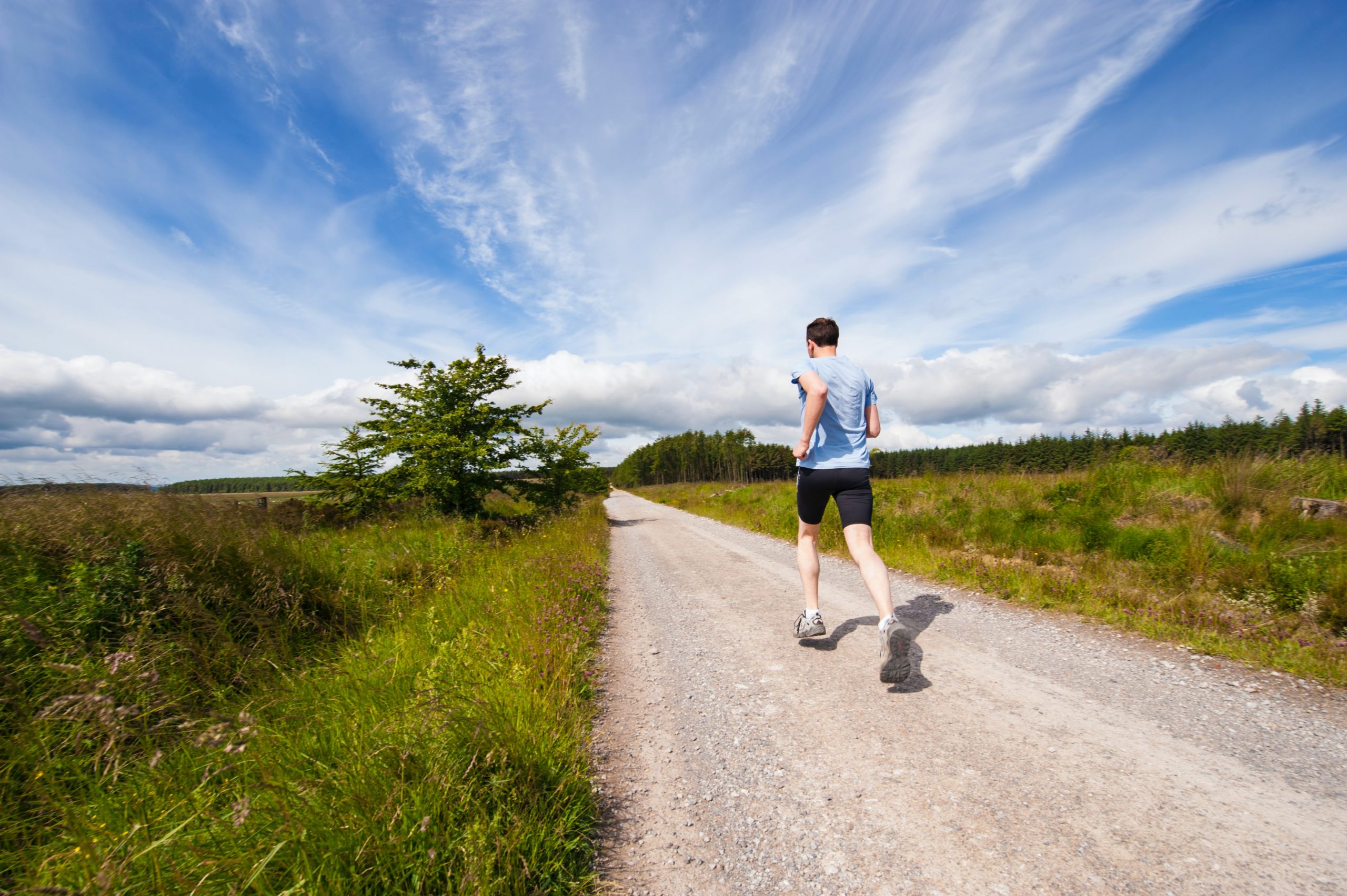Running and cycling: Does running help with cycling?

Aug 14, 2021

Running and cycling: Does running help with cycling?
Aug 14, 2021

Running and cycling: Does running help with cycling?

Aug 14, 2021

Running and Cycling: A Dynamic Duo
Many of today’s cyclists are no longer just riding their bikes. More and more are regularly putting on a pair of running shoes, hitting the gym, swimming, or joining boot camps. The cycling world was surprised last spring when Roglic and Wout van Aert were seen running together on the flanks of the Teide volcano during their altitude training camp. While we already knew that Wout van Aert is not averse to running through the mud with his bike on his shoulder, seeing a general classification rider like Roglic regularly lace up his running shoes was unexpected news to many in the cycling world.
The question for recreational cyclists is: should we all start running now as well? Did Jumbo-Visma start sending Robert Gesink and Steven Kruiswijk a pair of Nikes with carbon soles? In other words, does running have benefits for cyclists? Before we dive in, let’s separate a few scenarios. First, there’s the cyclist who occasionally enjoys running as cross-training, while keeping their primary goals on the bike—a very balanced approach. Then there’s the cyclist who sets a running goal, making cycling a secondary part of their training. And of course, there are runners who occasionally cycle, but we’ll leave them aside for now.
Running and Cycling Training Plan: Running to Improve Cycling Performance
Let’s start with cyclists who run to boost their cycling performance, as in the case of Roglic. Is it a good idea? As with almost everything, it depends. But let’s be clear: running is not as disastrous for cyclists as some might think. Running uses many of the same muscle groups as cycling, though with a different coordination (strength and length relationship), meaning experienced cyclists may see limited muscle-building benefits from running.
Nevertheless, running supports cycling fitness through muscle adaptations. Running also strengthens the heart-lung system, which is essential for cycling. Because running is weight-bearing while cycling typically is not (except on climbs), running intensity is generally higher. This means you can train the cardiovascular system effectively in a short time at a high intensity, which can be more efficient than road cycling unless you live near something like Alpe d’Huez.
Does Running Help with Cycling?
Running can enhance a cyclist's cardiovascular fitness and engages similar muscle groups, but it also includes eccentric muscle use—where muscles lengthen on impact. This can be taxing for cyclists unaccustomed to it. Incorporating running gradually can improve fitness and complement cycling, especially when done with care to avoid injuries from overuse.
The Eccentric Impact of Running
Running efficiently trains the cardiovascular system and involves many of the same muscles as cycling. However, it also uses these muscles eccentrically, lengthening them upon impact. This is very different from the concentric muscle movements (shortening) that cyclists are used to, and it can lead to soreness that makes high running volumes challenging. Runners may log 70 kilometers a week, but experienced cyclists often train for more hours on the bike than runners can manage on foot.
Running is Always Weight-Bearing
With running, you are constantly supporting your body weight. This impact affects not only your muscles but also your tendons, joints, and even bones. For beginner runners who are experienced cyclists, a slow buildup is essential. While your cycling fitness may allow you to easily run ten kilometers at a brisk pace, your muscles, tendons, and joints may not be prepared. Often, after just a few running sessions, injuries appear and the running shoes return to the closet. A novice runner with good physical conditioning should start with alternating short running intervals with walking, gradually building up over the first few weeks.
Running as Medicine
There is a positive aspect to this impact. Since cycling is not weight-bearing, it spares the skeletal system. This can be a drawback for cyclists, especially older athletes or women, as they risk losing bone density, a condition known as osteoporosis. Running, with its impact load, can actually help counteract this effect. Whether due to time constraints or other benefits, cyclists may add running to their training now and then. But will running make you faster on the bike?
The answer is uncertain. Based on your fitness level, you can only handle a certain training load per day, week, or month. If your schedule is already packed with cycling, you can’t simply add running without risking overtraining. If you’re not Roglic, you quite literally run the risk of overdoing it. Additionally, many cyclists have limited training time, and depending on their goals, running may or may not add much value. A core principle of training is specificity: train directly for the goal you want to improve.
Cyclists with a Running Goal
Now, let’s consider cyclists who set a running goal for themselves. First, the advice is to increase training very gradually. Second, continue this gradual progression even if you already have some running experience. Running injuries among cyclists have contributed to the idea that running is “bad” for cyclists. By building up slowly, you can help prevent injury. Even if trained in running, you’ll notice that running-only workouts total less time than what you’re used to on the bike. This makes long, endurance cycling sessions a perfect addition to support a running-focused training plan.
Practical Tips
Finally, here are a few practical tips. As mentioned, trained cyclists should start running very gradually. Running requires more technique than it may seem. To minimize injury risks, avoid running on uneven surfaces, invest in shoes suited to your body type, and consider a few technique lessons. These steps reduce impact and can significantly lower injury risk. And if running still doesn’t suit you, remember that you can still win the Tour de France without any running training.
Running and Cycling: A Dynamic Duo
Many of today’s cyclists are no longer just riding their bikes. More and more are regularly putting on a pair of running shoes, hitting the gym, swimming, or joining boot camps. The cycling world was surprised last spring when Roglic and Wout van Aert were seen running together on the flanks of the Teide volcano during their altitude training camp. While we already knew that Wout van Aert is not averse to running through the mud with his bike on his shoulder, seeing a general classification rider like Roglic regularly lace up his running shoes was unexpected news to many in the cycling world.
The question for recreational cyclists is: should we all start running now as well? Did Jumbo-Visma start sending Robert Gesink and Steven Kruiswijk a pair of Nikes with carbon soles? In other words, does running have benefits for cyclists? Before we dive in, let’s separate a few scenarios. First, there’s the cyclist who occasionally enjoys running as cross-training, while keeping their primary goals on the bike—a very balanced approach. Then there’s the cyclist who sets a running goal, making cycling a secondary part of their training. And of course, there are runners who occasionally cycle, but we’ll leave them aside for now.
Running and Cycling Training Plan: Running to Improve Cycling Performance
Let’s start with cyclists who run to boost their cycling performance, as in the case of Roglic. Is it a good idea? As with almost everything, it depends. But let’s be clear: running is not as disastrous for cyclists as some might think. Running uses many of the same muscle groups as cycling, though with a different coordination (strength and length relationship), meaning experienced cyclists may see limited muscle-building benefits from running.
Nevertheless, running supports cycling fitness through muscle adaptations. Running also strengthens the heart-lung system, which is essential for cycling. Because running is weight-bearing while cycling typically is not (except on climbs), running intensity is generally higher. This means you can train the cardiovascular system effectively in a short time at a high intensity, which can be more efficient than road cycling unless you live near something like Alpe d’Huez.
Does Running Help with Cycling?
Running can enhance a cyclist's cardiovascular fitness and engages similar muscle groups, but it also includes eccentric muscle use—where muscles lengthen on impact. This can be taxing for cyclists unaccustomed to it. Incorporating running gradually can improve fitness and complement cycling, especially when done with care to avoid injuries from overuse.
The Eccentric Impact of Running
Running efficiently trains the cardiovascular system and involves many of the same muscles as cycling. However, it also uses these muscles eccentrically, lengthening them upon impact. This is very different from the concentric muscle movements (shortening) that cyclists are used to, and it can lead to soreness that makes high running volumes challenging. Runners may log 70 kilometers a week, but experienced cyclists often train for more hours on the bike than runners can manage on foot.
Running is Always Weight-Bearing
With running, you are constantly supporting your body weight. This impact affects not only your muscles but also your tendons, joints, and even bones. For beginner runners who are experienced cyclists, a slow buildup is essential. While your cycling fitness may allow you to easily run ten kilometers at a brisk pace, your muscles, tendons, and joints may not be prepared. Often, after just a few running sessions, injuries appear and the running shoes return to the closet. A novice runner with good physical conditioning should start with alternating short running intervals with walking, gradually building up over the first few weeks.
Running as Medicine
There is a positive aspect to this impact. Since cycling is not weight-bearing, it spares the skeletal system. This can be a drawback for cyclists, especially older athletes or women, as they risk losing bone density, a condition known as osteoporosis. Running, with its impact load, can actually help counteract this effect. Whether due to time constraints or other benefits, cyclists may add running to their training now and then. But will running make you faster on the bike?
The answer is uncertain. Based on your fitness level, you can only handle a certain training load per day, week, or month. If your schedule is already packed with cycling, you can’t simply add running without risking overtraining. If you’re not Roglic, you quite literally run the risk of overdoing it. Additionally, many cyclists have limited training time, and depending on their goals, running may or may not add much value. A core principle of training is specificity: train directly for the goal you want to improve.
Cyclists with a Running Goal
Now, let’s consider cyclists who set a running goal for themselves. First, the advice is to increase training very gradually. Second, continue this gradual progression even if you already have some running experience. Running injuries among cyclists have contributed to the idea that running is “bad” for cyclists. By building up slowly, you can help prevent injury. Even if trained in running, you’ll notice that running-only workouts total less time than what you’re used to on the bike. This makes long, endurance cycling sessions a perfect addition to support a running-focused training plan.
Practical Tips
Finally, here are a few practical tips. As mentioned, trained cyclists should start running very gradually. Running requires more technique than it may seem. To minimize injury risks, avoid running on uneven surfaces, invest in shoes suited to your body type, and consider a few technique lessons. These steps reduce impact and can significantly lower injury risk. And if running still doesn’t suit you, remember that you can still win the Tour de France without any running training.
Running and Cycling: A Dynamic Duo
Many of today’s cyclists are no longer just riding their bikes. More and more are regularly putting on a pair of running shoes, hitting the gym, swimming, or joining boot camps. The cycling world was surprised last spring when Roglic and Wout van Aert were seen running together on the flanks of the Teide volcano during their altitude training camp. While we already knew that Wout van Aert is not averse to running through the mud with his bike on his shoulder, seeing a general classification rider like Roglic regularly lace up his running shoes was unexpected news to many in the cycling world.
The question for recreational cyclists is: should we all start running now as well? Did Jumbo-Visma start sending Robert Gesink and Steven Kruiswijk a pair of Nikes with carbon soles? In other words, does running have benefits for cyclists? Before we dive in, let’s separate a few scenarios. First, there’s the cyclist who occasionally enjoys running as cross-training, while keeping their primary goals on the bike—a very balanced approach. Then there’s the cyclist who sets a running goal, making cycling a secondary part of their training. And of course, there are runners who occasionally cycle, but we’ll leave them aside for now.
Running and Cycling Training Plan: Running to Improve Cycling Performance
Let’s start with cyclists who run to boost their cycling performance, as in the case of Roglic. Is it a good idea? As with almost everything, it depends. But let’s be clear: running is not as disastrous for cyclists as some might think. Running uses many of the same muscle groups as cycling, though with a different coordination (strength and length relationship), meaning experienced cyclists may see limited muscle-building benefits from running.
Nevertheless, running supports cycling fitness through muscle adaptations. Running also strengthens the heart-lung system, which is essential for cycling. Because running is weight-bearing while cycling typically is not (except on climbs), running intensity is generally higher. This means you can train the cardiovascular system effectively in a short time at a high intensity, which can be more efficient than road cycling unless you live near something like Alpe d’Huez.
Does Running Help with Cycling?
Running can enhance a cyclist's cardiovascular fitness and engages similar muscle groups, but it also includes eccentric muscle use—where muscles lengthen on impact. This can be taxing for cyclists unaccustomed to it. Incorporating running gradually can improve fitness and complement cycling, especially when done with care to avoid injuries from overuse.
The Eccentric Impact of Running
Running efficiently trains the cardiovascular system and involves many of the same muscles as cycling. However, it also uses these muscles eccentrically, lengthening them upon impact. This is very different from the concentric muscle movements (shortening) that cyclists are used to, and it can lead to soreness that makes high running volumes challenging. Runners may log 70 kilometers a week, but experienced cyclists often train for more hours on the bike than runners can manage on foot.
Running is Always Weight-Bearing
With running, you are constantly supporting your body weight. This impact affects not only your muscles but also your tendons, joints, and even bones. For beginner runners who are experienced cyclists, a slow buildup is essential. While your cycling fitness may allow you to easily run ten kilometers at a brisk pace, your muscles, tendons, and joints may not be prepared. Often, after just a few running sessions, injuries appear and the running shoes return to the closet. A novice runner with good physical conditioning should start with alternating short running intervals with walking, gradually building up over the first few weeks.
Running as Medicine
There is a positive aspect to this impact. Since cycling is not weight-bearing, it spares the skeletal system. This can be a drawback for cyclists, especially older athletes or women, as they risk losing bone density, a condition known as osteoporosis. Running, with its impact load, can actually help counteract this effect. Whether due to time constraints or other benefits, cyclists may add running to their training now and then. But will running make you faster on the bike?
The answer is uncertain. Based on your fitness level, you can only handle a certain training load per day, week, or month. If your schedule is already packed with cycling, you can’t simply add running without risking overtraining. If you’re not Roglic, you quite literally run the risk of overdoing it. Additionally, many cyclists have limited training time, and depending on their goals, running may or may not add much value. A core principle of training is specificity: train directly for the goal you want to improve.
Cyclists with a Running Goal
Now, let’s consider cyclists who set a running goal for themselves. First, the advice is to increase training very gradually. Second, continue this gradual progression even if you already have some running experience. Running injuries among cyclists have contributed to the idea that running is “bad” for cyclists. By building up slowly, you can help prevent injury. Even if trained in running, you’ll notice that running-only workouts total less time than what you’re used to on the bike. This makes long, endurance cycling sessions a perfect addition to support a running-focused training plan.
Practical Tips
Finally, here are a few practical tips. As mentioned, trained cyclists should start running very gradually. Running requires more technique than it may seem. To minimize injury risks, avoid running on uneven surfaces, invest in shoes suited to your body type, and consider a few technique lessons. These steps reduce impact and can significantly lower injury risk. And if running still doesn’t suit you, remember that you can still win the Tour de France without any running training.
More Relevant Articles
Discover valuable training tips to enhance your cycling performance.
More Relevant Articles
Discover valuable training tips to enhance your cycling performance.
More Relevant Articles
Discover valuable training tips to enhance your cycling performance.

Unlock Your Cycling Potential Today
Join thousands of cyclists who have improved their performance with JOIN's training plans.

Unlock Your Cycling Potential Today
Join thousands of cyclists who have improved their performance with JOIN's training plans.
By joining, you agree to our Terms and Conditions and our Privacy Policy.

Unlock Your Cycling Potential Today
Join thousands of cyclists who have improved their performance with JOIN's training plans.
By joining, you agree to our Terms and Conditions and our Privacy Policy.



